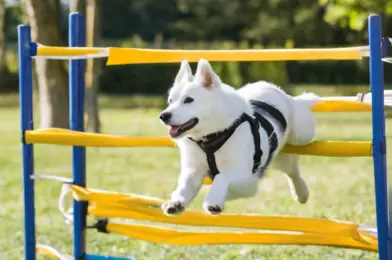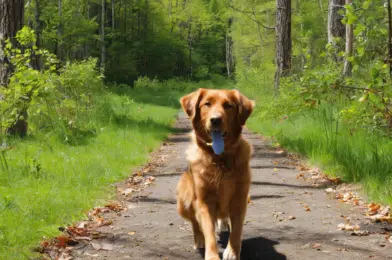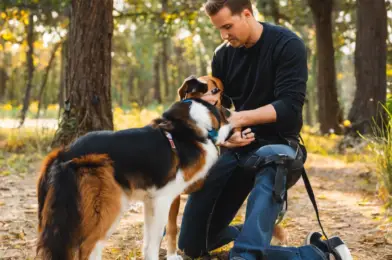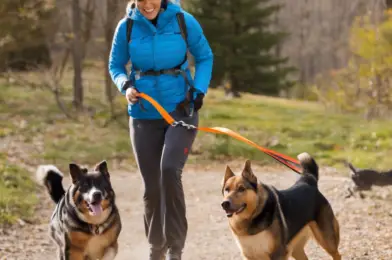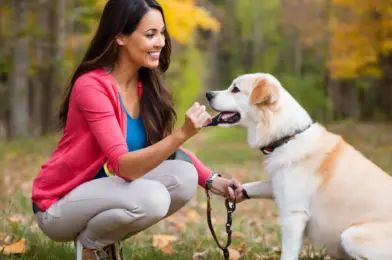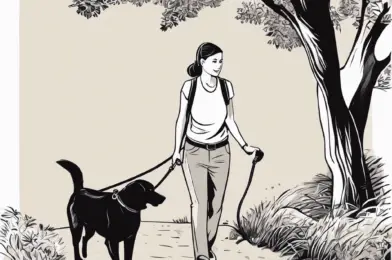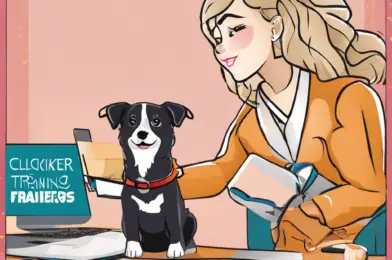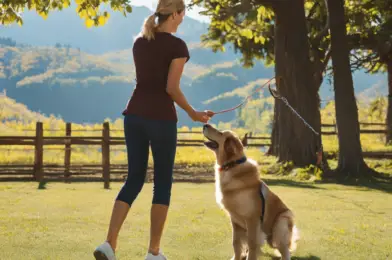# Unlocking the Secrets of Advanced Obedience Training
Obedience training is a fundamental aspect of dog ownership, ensuring that our furry friends become well-behaved and responsive companions. While basic obedience commands like sit, stay, and come are essential for every dog owner, there’s a whole new level of training that can take your dog’s behavior and your bond to the next level. Advanced obedience training goes beyond the basics, focusing on refining behaviors, strengthening communication, and fostering a deeper understanding between you and your canine companion.
## Mastering Advanced Commands: Precision and Focus
At the heart of advanced obedience training is the mastery of advanced commands, which require precision and focus from both the dog and the handler. These commands include heel, where the dog walks calmly by your side without pulling, and the recall command, which involves teaching your dog to come to you immediately, regardless of distractions. Other advanced commands could include hand signals, where dogs respond to specific gestures, and distance commands, allowing you to control your dog’s behavior even from a distance.
To achieve perfection in these commands, trainers employ various techniques. One popular method is shaping, where a desired behavior is taught through incremental steps and positive reinforcement. For example, when teaching heel, the trainer might start by rewarding the dog for walking close by their side for a few steps, gradually increasing the distance and duration over time. This method helps dogs understand exactly what is expected of them and encourages consistent performance.
Another powerful training tool is the use of markers, such as a clicker or a verbal cue, to pinpoint the exact moment a dog performs the correct behavior. This helps dogs understand which action earned them the reward, making training more efficient.
## Proofing: Building Reliability in Any Situation
Advanced obedience training also focuses on ‘proofing’ behaviors, which means ensuring that your dog responds reliably in various environments and amidst distractions. This is crucial for real-world situations, as dogs may encounter new challenges that can distract them from obeying commands.
Proofing techniques involve gradually exposing your dog to different environments and distractions while practicing commands. For instance, you might start training in your backyard and then move to a park, a busy street, or even a pet-friendly store. By gradually increasing the level of distraction, you can help your dog stay focused and obedient even in stimulating environments.
One effective proofing method is to vary the rewards and motivators during training. For example, you could use a favorite toy for recall training in a low-distraction environment, and then switch to high-value treats when practicing in a more stimulating setting. This keeps your dog engaged and helps them generalize the behavior across different situations.
## The Power of Positive Reinforcement
The foundation of advanced obedience training, just like any other dog training approach, lies in positive reinforcement. Rewarding desired behaviors encourages dogs to repeat them and fosters a strong bond between you and your pet. Treats, praise, and playtime can all be powerful motivators, and finding what works best for your dog is crucial for effective training.
Positive reinforcement can also be tailored to suit individual dogs’ personalities and preferences. For instance, some dogs may respond better to a game of fetch as a reward for completing a complex command, while others might prefer a quiet moment of petting and praise. Understanding your dog’s preferences and adjusting your training approach accordingly can make a significant difference in their performance.
## Enhancing Communication: Beyond Verbal Commands
One of the most remarkable aspects of advanced obedience training is the emphasis on enhancing communication between you and your dog. This goes beyond verbal commands, as dogs can also learn to respond to hand signals, body language, and even subtle cues like a shift in your gaze.
Hand signals are particularly useful for owners with hearing-impaired dogs or those who want to communicate silently in certain situations. These signals can be taught alongside verbal commands, providing an additional layer of understanding for your dog. For example, you might use a hand signal for “sit” while saying the command, and over time, your dog will learn to respond to the hand signal alone.
## Mental Stimulation and Problem-Solving
Advanced obedience training is not just about teaching your dog new tricks but also about providing mental stimulation and improving their problem-solving skills. Incorporating elements of canine puzzle games or scent work into your training sessions can engage your dog’s natural instincts and encourage critical thinking.
For example, you could hide treats around the house and ask your dog to find them using the “search” command. This not only reinforces their obedience skills but also taps into their natural scent-tracking abilities, keeping them mentally sharp. Incorporating such activities into your training routine can prevent boredom and promote a well-rounded, engaged dog.
## The Benefits of Advanced Training for Real-World Scenarios
Advanced obedience training has numerous practical benefits for real-life situations. For instance, a dog trained in advanced recall can be safely recalled from a distance or in an open area, preventing them from running into traffic or getting lost. Similarly, a dog that heels perfectly can navigate crowded spaces or walk calmly beside you on a busy street.
This level of training can also be invaluable in emergency situations. A well-trained dog can be quickly and safely moved out of harm’s way, whether it’s a natural disaster or a medical emergency. The ability to communicate and control your dog effectively can make a significant difference in such scenarios.
## Building a Strong Bond with Your Dog
Advanced obedience training requires a deep level of trust and understanding between you and your dog. As you work together to master new skills and overcome challenges, your bond will strengthen. Your dog will learn to rely on you for guidance and look to you for direction, fostering a sense of teamwork and companionship.
Engaging in advanced training can also be a fantastic way to spend quality time with your dog. It provides a structured yet enjoyable activity that keeps both you and your dog mentally stimulated and physically active. This shared experience can create lasting memories and a deeper connection between you and your furry friend.
## Conclusion: The Rewards of Advanced Obedience Training
Advanced obedience training is a journey that can take your dog’s behavior and your relationship to impressive new heights. It offers the opportunity to develop a highly responsive, well-behaved companion while strengthening your bond and understanding of each other. By investing time and effort into this training, you can unlock your dog’s full potential and create a truly remarkable partnership.
Remember, the key to success lies in patience, consistency, and a deep love for your pet. With these elements in place, you and your dog can embark on an exciting adventure in the world of advanced obedience training, reaping the rewards for years to come.

